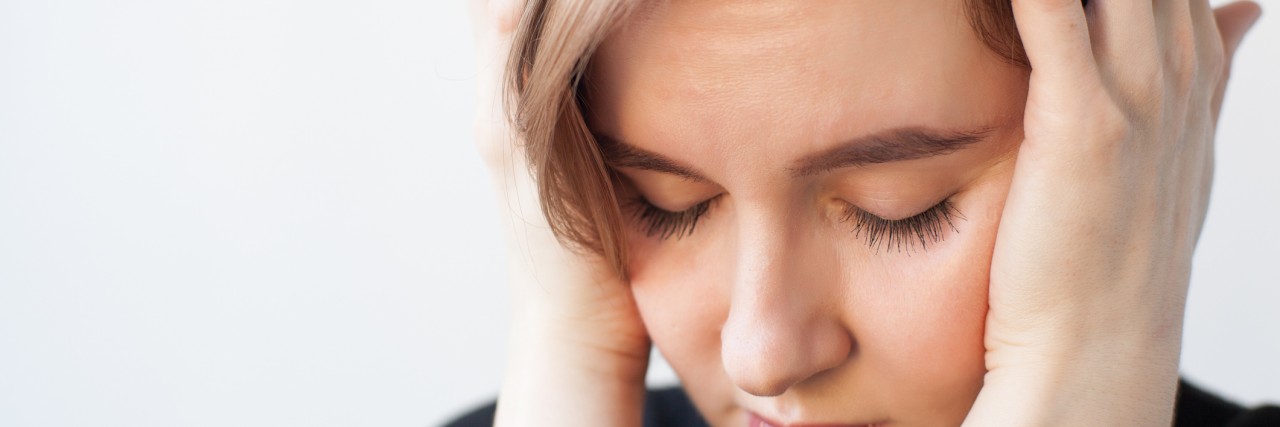What OCD Obsessions Can Really Be Like
Editor’s note: If you struggle with obsessive-compulsive disorder (OCD), the following post could be potentially triggering. You can contact the Crisis Text Line by texting “START” to 741-741. To find help visit International OCD Foundation’s website.
It is nice to have a clean and tidy house. It is easier to find things, there are less cockroaches, your mother approves and it reduces the workload when preparing for snooty guests and epic parties.
It is also important to wash your hands and be hygienic. It isn’t nice to shake hands with people and give them your poo germs. It isn’t ideal to spread your boogers and cough remnants to the public, even if some particularly rude people deserve it. It isn’t good if the food you eat and serve to others has elements of raw mystery meat after making sausages.
What’s not good is spending so much time cleaning and tidying up that you miss social events or are late to work. What’s not good is washing your hands so frequently that not only do you use up all the expensive soap you got for Christmas from your aunty, but you also rub your hands so raw that they bleed and are painfully dry and cracked.
And yet you can’t stop these behaviors because you are so terrified that if you don’t engage in them, something unspeakably awful will happen, something so dreadful you don’t even want to consider it.
I don’t want to preach, but there isn’t enough awareness about the truth of this disorder. All too often OCD is linked to words such as “quirky, individual, weird, cleanliness,” instead of words such as “emotional distress, incapacitating, fear, terror.” The near-constant preoccupation and worry we may feel is diminished and invalidated by offhand comments about things being in order and double checking.
People seem to forget or don’t realize that obsessive-compulsive disorder is, well, a disorder. Which is, boringly yet accurately put, “an illness that disrupts normal physical or mental functions.” OCD is not being simply upset or annoyed at, say, uneven eyebrows, the TV volume on a particular number, when the pencils aren’t in order of color, someone taking too long to reply to a message or the non-uniformity of decorations or ornaments. In reality, it is having intrusive, unwanted, repetitive and often highly distressing thoughts that take over your entire headspace. It can cause panic attacks, depression, extreme anxiety and even suicidal thoughts. The preoccupation with the thoughts and the distracting urges to act (or not act) on them may also result in lower concentration and difficulties at school or work.
OCD can manifest in a variety of compulsive behaviors, for instance constant checking, constant counting; and also exercising, calorie counting, body checking (the latter group are sort of bonus features of the horror movie box case set “Eating Disorder.”) They are either a form of solution seeking (“If I do ABC, then XYZ will/won’t happen.”) or a result of seeking relief from the thoughts and urges.
OCD can also be just in the mind and may not result in visible behaviors. Instead, over three quarters of waking hours can be spent ruminating and worrying, thanks to aggressively repetitive thoughts. These obsessional thoughts not only feel real and tangible, but also, rather inconveniently, are often strong fears of acting violently or creepily. They may include doing sexual stuff, killing or badly hurting loved ones, or harming animals and children. It’s important to know having these thoughts does not mean a person with OCD acts on them. The difference between these OCD thoughts and Hollywood level “insanity” is that the thoughts are near constant and accompanied by anxiety and distress.
The above type of thoughts are called “Pure O” (but please don’t get them mixed up with the type of ‘O’ that Cosmopolitan will talk about!). While they are just thoughts, their constant presence means the person may worry they will actually act on them, and so will attempt to avoid situations in which they could happen or try to figure out ways to stop themselves from doing whatever it is that the thoughts are saying will happen. Unfortunately, it is hard to out-logic any type of OCD. Plus, the thoughts seem so absurd, abhorrent and taboo it takes a lot of bravery and trust to open up about them.
Just like many disorders, OCD can be treated with medication, professional counseling and support. Yay! Unfortunately, recovery does take a lot of effort, time, dedication and many moments of feeling helpless and afraid. Then again, OCD tends to take up lots of time and make you feel helpless and fearful anyway, so you may as well seek treatment. After all, these thoughts, as frightening as they are, do not have to hurt you.
If you or someone you know needs help, visit our suicide prevention resources page.
If you need support right now, call the National Suicide Prevention Lifeline at 1-800-273-8255, the Trevor Project at 1-866-488-7386 or text “START” to 741-741.
Follow this journey on Encyclopedia of Recovery.
We want to hear your story. Become a Mighty contributor here.
Thinkstock photo by Koldunov

